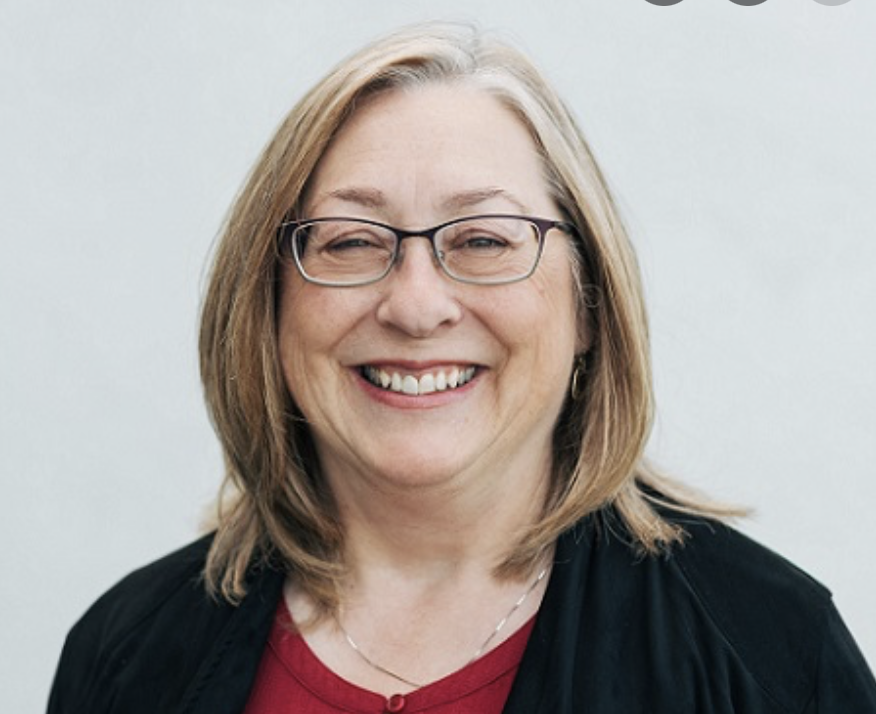In a two-part series, The Coast Clarion investigates why affordable housing is so very hard to achieve on the Coast.

(By Margot Grant)
We need affordable housing, but no new units will become available in the next year, and what is in the works doesn’t even begin to meet the need. What stands in the way?
The Coast Clarion interviewed Darnelda Siegers, mayor of the District of Sechelt and chair of the board of the Sunshine Coast Regional District; Kelly Foley, the newly appointed regional housing manager; Silas White, the Sunshine Coast emergency housing coordinator, and Aleria Ladwig, the Gibsons councillor who has affordable housing in her portfolio.
We asked them what local governments are doing to solve the crisis.
Part 2: The problems with alternative housing
(By Margot Grant)
Could tiny homes, RVs, repurposed industrial camp units or container homes help to ease the housing crunch? People desperately need a place to live, and many would consider temporarily living in this sort of accommodation. Some owners of private lots would be happy to provide space for them if they got permission from their local government.
Great idea, but the BC Building Code poses a big problem, Silas White says.

“Every building inspection department on the Coast goes by the book, and they won’t allow accommodations like repurposed ATCO trailers, RV’s, tiny homes. Local governments want people to be safe. Building inspectors and bylaw enforcement need to make sure the Building Code is followed,” he says.
Another complication is that RVs fall under the Mobile Home Tenancy Act, he says. “So people in RVs on campgrounds have the same rights as anyone else living in a rental, whereas the BC Building Code says that tiny homes and RVs aren’t actually considered buildings. So that’s a contradiction.”
And then there’s a whole other branch to be reckoned with, the Canadian Standards Organization, which approves recreational vehicles. “So there are a lot of conflicting guidelines. I’ve been asking the provincial government for some clarity,” White says.
There are local governments in B.C. that have decided not to follow the BC Building Code to the letter. The qathet Regional District (Powell River) allows more flexible approaches to building; Tofino has started its own safety inspections for RVs.
White believes these things could be done on the Lower Coast as well, but Kelly Foley warns it’s difficult because the local governments have been following the same approach for so long.
Darnelda Siegers agrees that the issue of RVs and tiny homes is complicated: “We are limited because of regulations we have to follow from the provincial and federal governments.”
“Local governments tend to be leery because of liability fears. If someone gets sick or hurt, they could get sued,” Foley says.
We need local governments to become comfortable with the idea of RV parks and tiny homes, she says. “And we need to get the community on board as well.”
It’s a process of education, Foley says. She intends to work on this with presentations to community groups, an online information campaign, opportunities for people to ask questions and to have a conversation.
Foley and White say they are actively advocating for alternative housing with local governments and the provincial government.
Mobile homes and mobile home parks
Could more mobile home parks help at all? Wouldn’t it be great if there were more of them?

“That’s not something government can provide, the regional district does not have the land,” Siegers says. “If somebody applies: perfect. There is one going through zoning on Reed Road right now.”
“As for RVs, we approve of places to park them as long as the neighbours are OK with it. That wouldn’t be the case in a place like Roberts Creek, right?” Siegers says.
“Look at what happened at Lockyer Road. First of all, the gentleman’s parcel was not zoned for campground. The OCP did not allow for temporary uses on it. Staff recommended that he looked to rezone it as a campground, but he did not want to do that.
“Along with that, he also needed to make sure he got proper septic, electrical and water. Those are not under our jurisdiction. The septic needs to be approved by Vancouver Coastal Health. And he needed to work with the Ministry of Transportation to make sure any drainage was dealt with properly. He didn’t do that.
“We were looking at a temporary use permit, a zoning change, basically, to allow him to have these RVs there, but he was not complying with any of the things that needed to be dealt with,” Siegers says.
“We have to consider the safety of the residents who live there, making sure the fire department can get in should they need to. If something was to happen on that property if we had let them go ahead without those safeguards everybody on the Sunshine Coast would be liable because we would have let that go forward.”
There is also the issue of precedence, she says. “There are other RVs, mobile homes on properties up and down the Coast. If we make this place legal, are the others going to be legal as well? I don’t know.”
Temporary work force housing
The Sechelt Chamber of Commerce, the Sechelt Downtown Business Association, Sechelt hospital, Vancouver Coastal Health, and several construction companies are actively looking at opportunities for temporary work force housing.
It doesn’t look like it is going to happen anytime soon.
“Of course nobody could object to temporary housing for workers, it benefits the economy,” Siegers says. “But where are they going to put these units, how do they get them serviced? I don’t know.”
Some companies have been buying houses to house workers, she points out.
White has a suggestion. “Some construction companies own vacant lots for future development. Local governments could allow them to use these for temporary camps for their workers, and perhaps for other workers as well.”
“If one of the three local governments adopts innovative solutions, and it works, I think the other two will take a close look.”
Temporary, alternative housing
Up and down the Coast people have come up with creative solutions for temporary, affordable housing. Like the previous owner of the former Irwin Motel in Gibsons, who placed used work camp units from Ritchie Brothers Auctioneers on the property so he could house people at low cost. The Town of Gibsons never officially acknowledged the project, it operated largely under the radar.
Could a temporary project with pre-plumbed former camp units be an option?
“It could be a temporary solution,” Siegers says. “But again, you need the land to do it. And somebody would have to be willing to haul those units in here, put the infrastructure in place to environmental standards, the whole process. If so, it could be approved and operated. Definitely, yes.
“If it’s in the regional district, it would have to be on a property that is zoned campground or something, otherwise it will have to be rezoned, and everybody around it needs to be aware it’s happening,” she says. “If someone is willing to come forward with a plan and land: great!”
She smiles. “Do you know anybody?”
White thinks it would be a difficult thing to do. “Even if these structures are inexpensive, there is still a capital cost, and BC Housing and the Canada Mortgage and Housing Corporation don’t fund temporary housing. Plus, there would be no tax revenue for the local government.”

Gibsons Council would be open to all sorts of innovative ideas and initiatives, says Ladwig. “These are questions that should be explored during an OCP amendment. Right now I don’t believe we have land use designations that would allow for that. The closest we have right now is campground.”
She would love to have a campground in Gibsons. “Like that place on North Road? I’d love it if that was turned into a campground, that would be awesome. But that’s not the owner’s plan, he wants to develop it. But if there’s appropriate land to have a campground in Gibsons, that would be great.”
What would be a potential good spot?“
“I don’t know.”
Could local governments provide affordable housing?
In other countries, it is not unusual for local governments to build and operate affordable housing. They borrow money from the government and pay the loans back with the rents over periods of thirty or fifty years. The projects pay for themselves. Is such a project feasible on the Sunshine Coast?
“Typically this is not something a local government would spearhead,” Siegers says. “Government is slow, it has rules and regulations, it takes forever to get something done.”
“If we had the land, somebody could come to us with a proposal. It would have to fit the zoning, or we could make the zoning fit, we’re open to looking at that,” Siegers says.
But it would be difficult, she says. “We’re a unionized shop. So we’d have to hire unionized workers, which is more expensive. And because we would be spending public money, we would have to get tenders. That doesn’t lend itself to this kind of operation. So it would have to be done by an outside organization.”
The Town of Gibsons is too small to consider creating its own social housing and becoming a landlord, Ladwig says.
Financing pitfalls
An important reason for the lack of affordable housing is the way the provincial government funds such projects, Silas White explains.
“Here is a big problem: only non-profits can apply for funding with BC Housing, and it takes a long, long time to get that money, and to get shovels into the ground.

“Look at what happened with the community housing project for women and children in Sechelt. BC Housing was on board from the beginning, the District of Sechelt expedited their zoning process to get it going, there was tremendous support in the community, but then they did not receive an actual cheque from the provincial government to hire a construction manager until relatively recently.
“So all this time nothing happens, and when he is finally hired, it turns out there are all these hoops they have to jump through that they could not even identify at an earlier stage. Non-profits don’t have the capacity to hire a construction manager, or do the preliminary work themselves.
“So the whole process is delayed and it’s going to be another year before the construction manager gets all the planning and permitting finalized before shovels go into the ground.
“And this is Community Services, they have a lot of funding and are employing a lot of people. But some of these organizations. . . like the Lions Club, that’s all volunteers.
“Look at what happened at Greencourts. BC Housing allocated that money about five years ago, but after delays in the process construction costs shot up $10.4 million.
Some organizations partner with a building firm from the start, like Kiwanis, to help them get through the approval process. “They got the funding, but there are no shovels in the ground because of all challenges with construction scheduling and the work force,” White says.
What else are local governments doing to solve the housing crisis?
The District of Sechelt and the SCRD are looking at changing their OCP’s this year, hoping for public input to facilitate affordable housing.
Gibsons has not entered into such a process. Gibsons councillor Aleria Ladwig has given a lot of thought about what council could have done differently.
“When we were first elected, I wish we had sat down and had a genuine heart-to-heart discussion about how the neighbourhoods in our community should build out and develop. Had we done that, I would have pushed for higher density in Upper Gibsons. I would have incentivized developers to build more units for first-home ownership, opportunities for seniors that are looking to downsize, and young people looking to enter the housing market.
“In hindsight, I wish we had looked at the land use designations in our OCP and increased density in Upper Gibsons where it’s flat and easy to build. Walking distance to everything, bus routes, services right there, low carbon footprint, that is where we should increase our density.
“When I look at our OCP, a lot of the higher density designations are ocean view, and that’s not entry-level.
“The elections are this year, it will be up to the next council to look at the OCP. It was approved in 2014, not that long ago, but so much has changed. We need to think differently, obviously. In 2014, the community was afraid of height. We need to get over that,” Ladwig said.
She is strongly in favour of affordable home ownership for people who work at the mill, the hospital, emergency services and the like. “They should not be taking up rentals. They should be in that five-storey apartment building as a starting point to enter the real estate market. We should partner with developers to make that happen.”

Kelly Foley has looked at other locations for inspiration to solve the affordable-housing crisis.
“There’s a lot of good work being done in Nanaimo and the Cowichan Valley, where they brought a lot of partners together to galvanize the situation.
“I’m very interested in: how do we build a machine that can be very successful? We need people who are driven, people from a diverse background, so we can understand what the need is. We need to make this successful in the long term. It’s a 360 approach: how, for instance, do we make sure that people who need child care also have affordable housing? We can give support. Like the Food Bank, we can have a person to connect you to other supportive services,” Foley says.
How does this increase the number of affordable housing units?
“What I’m saying is, to be successful you need a clear vision of what you want, understand what that is going to cost, and you need a very strong group of people that can pull it off,” Foley says.
Thanks for this informative in-depth two-part series on housing. Housing remains the major social crisis on the Sunshine Coast. It seems like we’re hamstrung by the provincial and federal governments, issues around land acquisition and the inability to shift the aims and intentions of developers. This central issue, as pointed out, is affecting many areas of social, economic and cultural development on our Sunshine Coast. People can’t move here, live, work and contribute to the economy and social fabric because there are no places to live. We need creative solutions to removing roadblocks now.
Local governments do not have the money or the power to solve the housing crisis. There needs to be more effort on the part of higher levels of government–especially the feds.
I agree with Steve’s comment.
As to counselor Ladwig’s comment about the public being “afraid of height”–I get the impression that most of that fear is of walling off the waterfront with high rise buildings like the proposed George Hotel, and that height in upper Gibsons might be more acceptable to most–especially if it is truly affordable for working age people. Though apartment living is not ideal for families with young children, there could also be other ways to densify.
Perhaps there needs to be a change in the way that vacant land is taxed if the purchaser leaves it vacant like some in Gibsons has been for over twenty years for profit by speculation. Perhaps vacant land could be taxed for its economic value at its zoning built potential and money so collected be applied to advancing affordable housing projects.